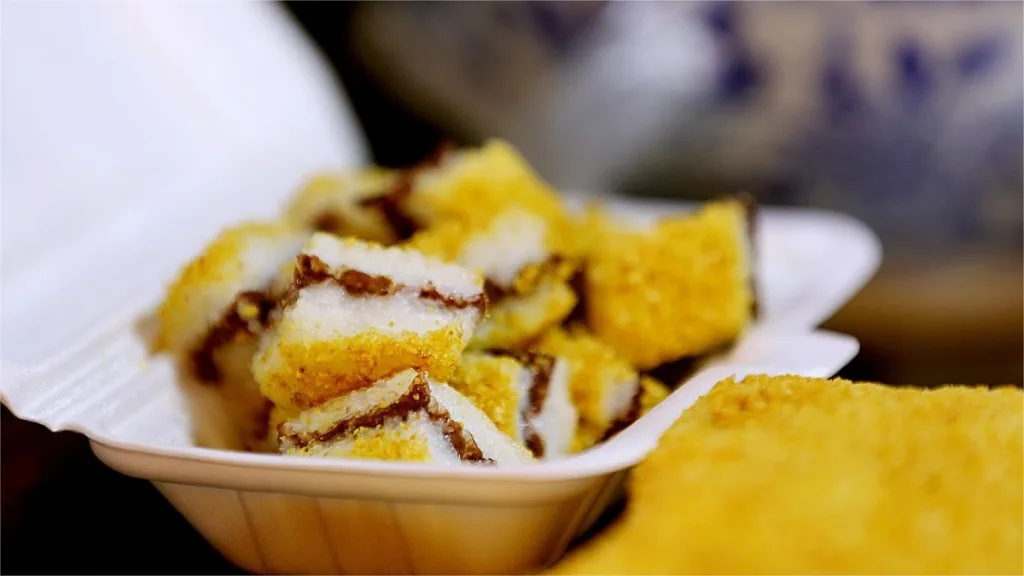Xi’an, an ancient city rich in history and culture, is a culinary treasure trove that offers an array of delectable dishes. As the starting point of the Silk Road and home to the Terracotta Army, Xi’an’s food culture is as diverse and vibrant as its historical heritage. From the bustling street food markets to traditional restaurants, the flavors of Xi’an are sure to captivate any food enthusiast. Here are seven must-try foods in Xi’an that encapsulate the essence of its culinary tradition and provide a delightful journey through its rich gastronomic landscape.
1. Roujiamo (Chinese Hamburger)

Preparation Method: Roujiamo consists of high-quality pork belly that is slow-cooked with various spices and seasonings until it becomes tender and flavorful. This savory meat is then stuffed into a special type of flatbread known as “baijimo,” which is typically handmade and baked to a crispy perfection on the outside while remaining soft inside.
Taste Characteristics: The meat is succulent and juicy, perfectly balanced with the crispy and slightly chewy baijimo. The addition of fresh herbs like cilantro and special sauces enhances the overall flavor, making each bite a delightful experience.
Cultural Background: Roujiamo’s history dates back to the Warring States period, where it evolved from a dish known as “hanrou.” Over the centuries, it has become a ubiquitous street food in Xi’an, enjoyed by locals and visitors alike at any time of the day.
2. Yangrou Paomo (Lamb Soup with Crumbled Bread)

Preparation Method: Yangrou Paomo is made by simmering high-quality lamb and bones with a variety of spices to create a rich and aromatic broth. Hard bread (usually a type of flatbread) is then crumbled into small pieces and added to the soup. The dish is garnished with fresh cilantro and green onions.
Taste Characteristics: The lamb broth is deeply flavorful and aromatic, with the bread soaking up the savory essence of the soup, giving it a satisfying texture and taste. A side of pickled garlic and chili sauce often accompanies this dish, adding an extra layer of flavor.
Cultural Background: This dish is a staple in Xi’an, with roots tracing back to the Tang dynasty. It is a comforting meal, especially popular during the colder months, and holds a special place in the hearts of the local people.
3. Biang Biang Noodles

Preparation Method: Biang Biang noodles are made from high-quality wheat flour, hand-pulled into thick, wide strips. They are then cooked and topped with a variety of seasonings, including chili oil, garlic, vinegar, and sometimes vegetables and meat.
Taste Characteristics: Biang Biang noodles are known for their chewy texture and robust, spicy flavor. The combination of the thick noodles and the tangy, spicy sauce creates a harmonious and satisfying dish.
Cultural Background: Biang Biang noodles are an integral part of Shaanxi’s noodle culture. The name “biang biang” is onomatopoeic, mimicking the sound made when the dough is slapped against the counter during preparation. The character for “biang” is famously complex, reflecting the intricate process of making these noodles.
4. Saozi Noodles

Preparation Method: Saozi refers to the minced meat (often pork or lamb) that is stir-fried with various vegetables and seasonings. This savory mixture is then served over freshly cooked noodles and topped with a flavorful broth.
Taste Characteristics: The noodles are firm and chewy, while the saozi provides a burst of umami flavor. The broth is typically slightly sour and spicy, creating a well-balanced and hearty meal.
Cultural Background: Saozi noodles have a long history in Shaanxi cuisine, often served during festivals and family gatherings. Its popularity has spread beyond Xi’an, becoming a beloved dish throughout China.
5. Hulu Chicken (Gourd-shaped Chicken)

Preparation Method: Hulu chicken is prepared through a unique process involving boiling, steaming, and deep-frying. The chicken is first cleaned and shaped to resemble a gourd, then marinated with spices, steamed until tender, and finally deep-fried until crispy.
Taste Characteristics: The chicken has a golden, crispy exterior and a tender, flavorful interior. The combination of textures and the aromatic spices make this dish a standout.
Cultural Background: Originating from the Tang dynasty, Hulu chicken was a favorite dish of the royal court. Its name and shape are symbolic, believed to bring good fortune and prosperity.
6. Liangpi (Cold Skin Noodles)

Preparation Method: Liangpi is made from wheat or rice flour dough that is steamed and then sliced into thin strips. These noodles are served cold, mixed with garlic water, sesame paste, vinegar, and chili oil. Often, bean sprouts and cucumber shreds are added for extra texture.
Taste Characteristics: Liangpi is refreshing and has a smooth, chewy texture. The combination of sesame paste and chili oil creates a rich, spicy, and nutty flavor, making it an ideal dish for hot weather.
Cultural Background: With origins in Shaanxi, liangpi has been a popular street food for centuries. It is especially favored during the summer months due to its cooling properties and robust flavor.
7. Zenggao (Glutinous Rice and Date Cake)

Preparation Method: Zenggao is made by steaming glutinous rice with red dates and sometimes red beans. The mixture is layered and steamed in a special type of steamer known as a “zeng,” which imparts a distinct texture and flavor to the cake.
Taste Characteristics: The cake is sweet, soft, and slightly sticky, with the natural sweetness of the dates complementing the chewy glutinous rice. It is often served as a dessert or a snack.
Cultural Background: Zenggao is a traditional snack in the Xi’an and broader Shaanxi region. Its preparation methods and ingredients have been passed down through generations, making it a beloved treat that reflects the region’s agricultural heritage.


